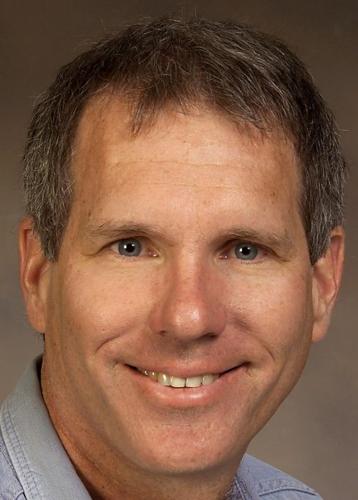Marcia Rieke had just returned from a ceremony inducting her husband, George, into the National Academy of Sciences when George called to tell her she would enjoy next year's ceremony as well.
Marcia, an astronomer, had just been elected to the academy at its annual meeting in Washington, D.C., along with UA biologist Roy Parker, boosting the UA's total in the academy to 14 current faculty - for a brief time. Parker is leaving to join the faculty of the University of Colorado at Boulder.
Marcia Rieke, whose current project is building a near-infrared camera for NASA's James Webb Space Telescope, was taking her morning exercise walk when her husband called Tuesday. It took a few minutes to absorb what he was trying to say.
"He said, 'You're going to enjoy this ceremony again next year' and I just figured he meant we'd be going every year now. Then he said, 'Congratulations' and it finally dawned on me."
Rieke said she was totally surprised by her election to the academy. "I figured, 'One family member - we done good.' "
The Riekes are not the first husband-and-wife team to be so honored and not the first astrophysicist couple. Princeton astronomer Neta Bahcall and her late husband, John, were members, Marcia Rieke noted.
Rieke, who earned her doctorate at the Massachusetts Institute of Technology, came to the UA for postdoctoral studies at the Lunar and Planetary Lab in 1976.
She joined the astronomy department in 1980. She was part of the UA team that built and operated NICMOS, the near-infrared camera and spectrometer aboard the Hubble Space Telescope. She also aided husband George in developing cameras and instruments for the Spitzer Space Telescope.
Her infrared camera for JWST, which NASA plans to launch in 2018, will image the earliest stars and galaxies in the universe, as well as help to characterize planets in orbit around nearby stars.
Lab's research
Parker has spent 22 years - his entire academic career - at the UA, where he is a regents' professor in the department of molecular and cellular biology.
"The University of Arizona has been a terrific place where I've made many friends," he said. "A good part of my success over the years is due to my lab as a research group."
Parker's lab made a number of discoveries about messenger RNA or mRNA, the molecule that encodes the chemical blueprint for a protein product.
It also discovered the structures known as P bodies, sites within cells where genetic material is stored, destroyed or reborn.
Parker said his lab's work leads to a basic understanding of how cells work and also the effects they have on viruses and memory.
"We try to understand how life works out of curiosity and also to address issues of human health, how they control viral infections and to understand and ultimately develop therapies for neuro-degenerative diseases."
Parker said he'll miss Tucson and the UA, but he could not pass up a "unique opportunity" at Boulder to be part of a new Biofrontiers Institute, headed by Nobel chemistry laureate Tom Cech.
"It's analogous to Bio5 (at UA) with a big, new research building where I'll have an endowed chair."
Current University of Arizona members of the National Academy of Sciences:
J. Roger P. Angel, David Arnett, William Dickinson, John Hildebrand, Randy Jokipii, Margaret Kidwell, John Law, George Rieke (all College of Science), Nicolaas Bloembergen (College of Optical Sciences), William Bowers and Brian Larkins (College of Agriculture), C. Vance Haynes (College of Social and Behavioral Science and College of Science).
Source: UA News
DID YOU KNOW?
The National Academy of Sciences was formed by Congress in 1863 and charged by President Abraham Lincoln to provide an independent source of advice on scientific matters to government. The academy votes in 84 new members each year. About 200 of its current 2,200 members are Nobel laureates, according to the academy Web site.
Contact reporter Tom Beal at tbeal@azstarnet.com or 573-4158.





